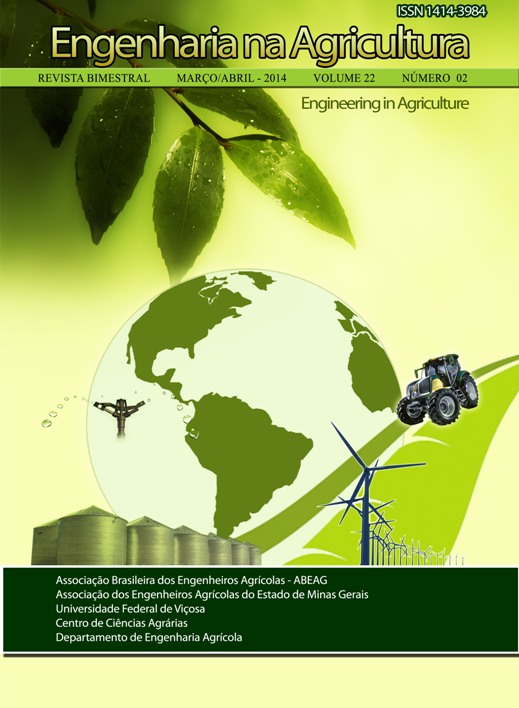LIMITAÇÕES FOTOSSINTÉTICAS EM FOLHAS DE PLANTAS DE TOMATEIRO SUBMETIDAS A CRESCENTES CONCENTRAÇÕES SALINAS - DOI: 10.13083/1414-3984.v22n02a05
DOI:
https://doi.org/10.13083/reveng.v22i2.488Palavras-chave:
estresse salino, fluorescência da clorofila a, Solanum lycopersicum, pigmentos fotossintéticos, trocas gasosasResumo
O objetivo deste trabalho foi avaliar as trocas gasosas, os parâmetros de fluorescência da clorofila a, a concentração de pigmentos fotossintéticos e o potencial osmótico em plantas de tomateiro submetidas a crescentes concentrações salinas. Para esta finalidade, plantas de tomateiro do cultivar Santa Clara foram cultivadas em vasos de 5 dm3 contendo solução nutritiva de Hoagland e submetidas aos tratamentos de 0, 50, 100 e 150 mmol L-1 de NaCl. O experimento foi realizado em casa de vegetação no Campus da Universidade Federal de Viçosa, num delineamento inteiramente casualizado com quatro repetições. Cada unidade experimental foi constituída por um vaso contendo duas plantas. Os resultados mostraram que o potencial osmótico nas folhas e nas raízes apresentaram reduções significativas à medida que se aumentava a concentração de NaCl na solução nutritiva, detectando o aumento do estresse sobre as plantas. A utilização da energia para os processos fotossintéticos e a capacidade de dissipação do excesso de energia na maquinaria fotossintética foi comprometida pelas crescentes concentrações salinas impostas pelos tratamentos, reduzindo a fotossíntese e o rendimento fotoquímico, demonstrado pelas trocas gasosas e pelos parâmetros de fluorescência de clorofila a, evidenciando que houve dano ao aparato fotossintético na fase bioquímica. As concentrações de pigmentos fotossintéticos diminuíram significativamente com o aumento na concentração salina, limitando a absorção da radiação fotossinteticamente ativa.Downloads
Downloads
Publicado
Como Citar
Edição
Seção
Licença
Autores que publicam nesta revista concordam com os seguintes termos:
O(s) autor(es) autoriza(m) a publicação do texto na da revista;
O(s) autor(es) garantem que a contribuição é original e inédita e que não está em processo de avaliação em outra(s) revista(s);
A revista não se responsabiliza pelas opiniões, ideias e conceitos emitidos nos textos, por serem de inteira responsabilidade de seu(s) autor(es);
É reservado aos editores o direito de proceder a ajustes textuais e de adequação às normas da publicação.
A partir da submissão, o autor estará cedendo integralmente seus direitos patrimoniais da obra à publicação, permanecendo detentor de seus direitos morais (autoria e identificação na obra) e de acordo com a Licença Creative Commons, CC BY-NC.








 Esta obra está licenciada com uma Licença
Esta obra está licenciada com uma Licença 